If there is one moment that can be credited with transforming the landscape of urban transport in India, it will be December 2002 – when the first leg of the Delhi metro began operations, which involved a small stretch of 8km between Shahdara and Tis Hazari.
While Kolkata had an operational metro network – the first in the country – since 1984 – it was the large scale and reach of the Delhi metro network and its impact on reducing the congestion that made the central and various state governments sit up and take notice of the benefits of this form of mass transport system. Over the next 13 years, even as the Delhi metro network expanded to 190km connecting 143 stations, various other cities started working on their own metro networks. Currently, seven cities in India have operational and expanding metro networks, built with total investment of Rs 2tn. Five more cities are expected to join the bandwagon over the next five years, entailing investments worth Rs 1tn. Furthermore, metro project in nine more cities are under development stage, envisaging investment of Rs 800bn. With Rs 4tn riding on various invested or to-be-invested metro networks across the country, the metro segment is truly the new poster boy of the infrastructure sector.
While the Indian demographic has seen rapid urbanisation over the last decade, the pace is likely to pick up over the next few. Currently, 377mn Indians or 31% of the population live in urban centers as compared to 45% in China, 54% in Indonesia, and 87% in Brazil. The earlier Planning Commission had estimated that this number will touch 600mn by 2031 – an exodus of over 200mn in just 20 years!
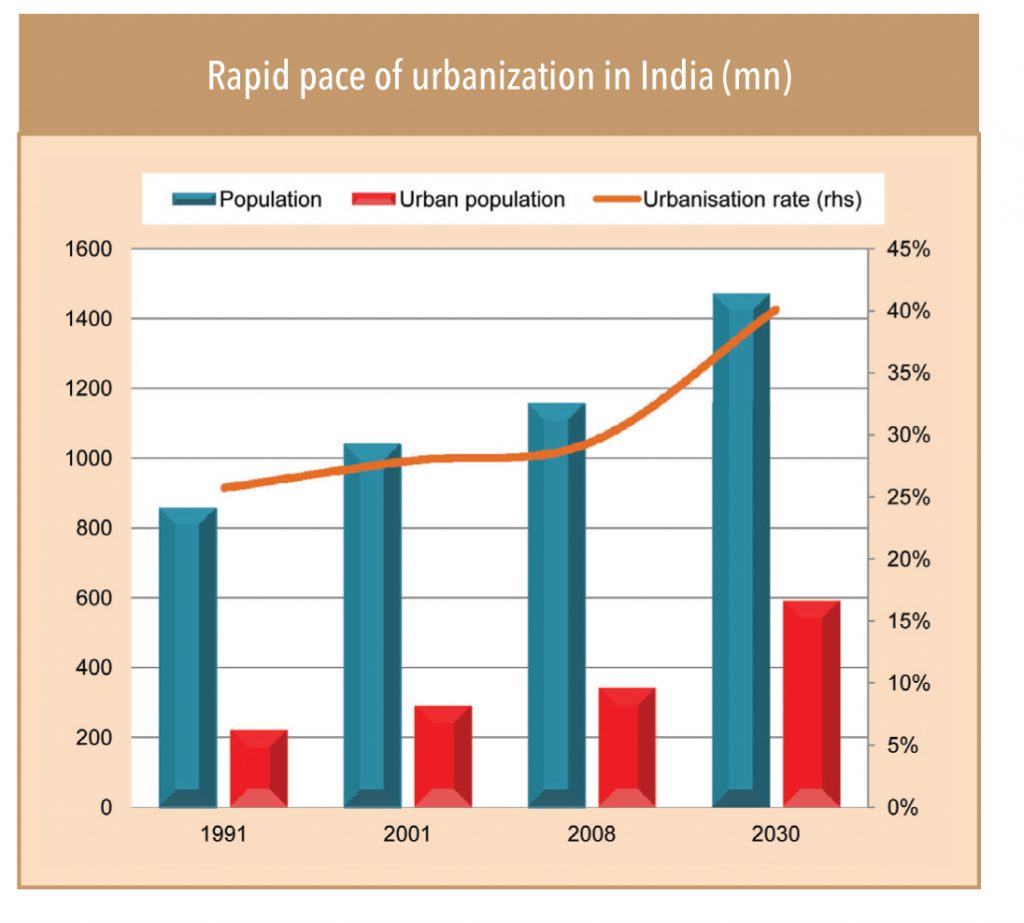
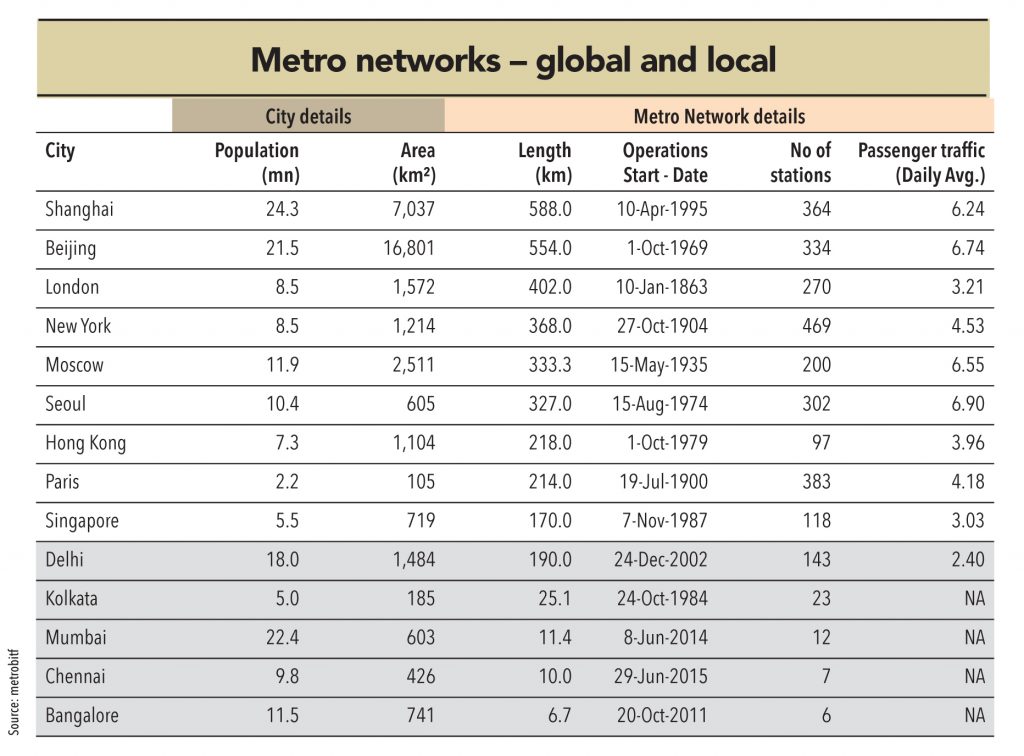
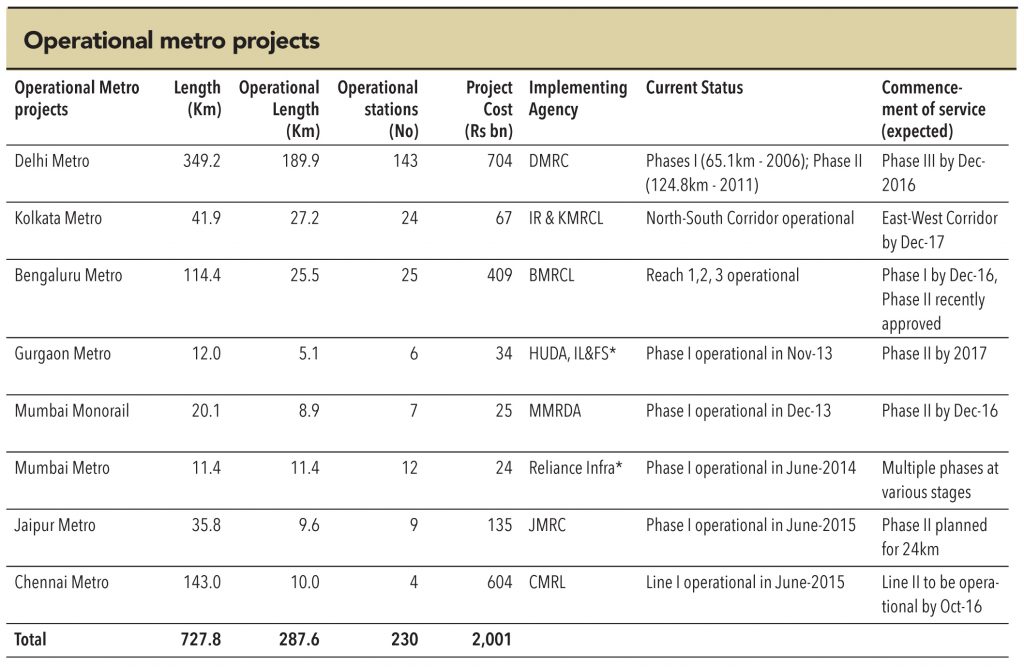
Most Indian cities are ill equipped to handle such a large population migration. With such migrations, it is not just basic necessities such as water, power, and sanitation that need to be provided, but infrastructure facilities such as public transport and roads also need to be upgraded. Since most cities in India are not planned, there is limited scope for intra-city road expansions and this creates a pressing need for other forms of transport.
Currently, only seven cities in India (with a population of over one million) have a metro network – five of these commissioned their first phase in the last two years. Most of these metro networks (except Delhi) are currently too small – either to decongest roads or to provide a plausible alternative means of transport.
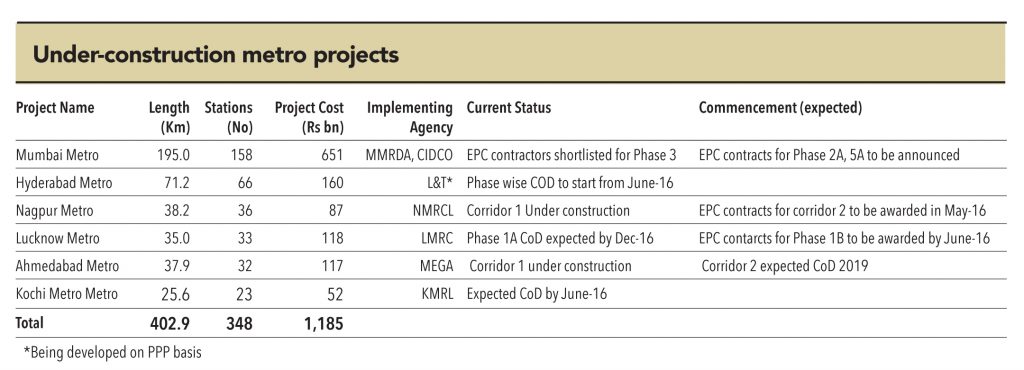
The seven cities with operational metro networks, have total investment of Rs 2tn riding on them. Five more cities are expected to join the bandwagon over the next five years, entailing investments worth Rs 1tn. With those projects commencing operations, the metro network in the country is expected to expand from the current 280km to over 700km by 2020.
Furthermore, metro projects in nine more cities are under development stage, envisaging investment of Rs 870bn, adding another 400km to the metro network. With Rs 4tn riding on various invested or to-be-invested metro networks across the country, the urban landscape of the country can be expected to witness a radical transformation.
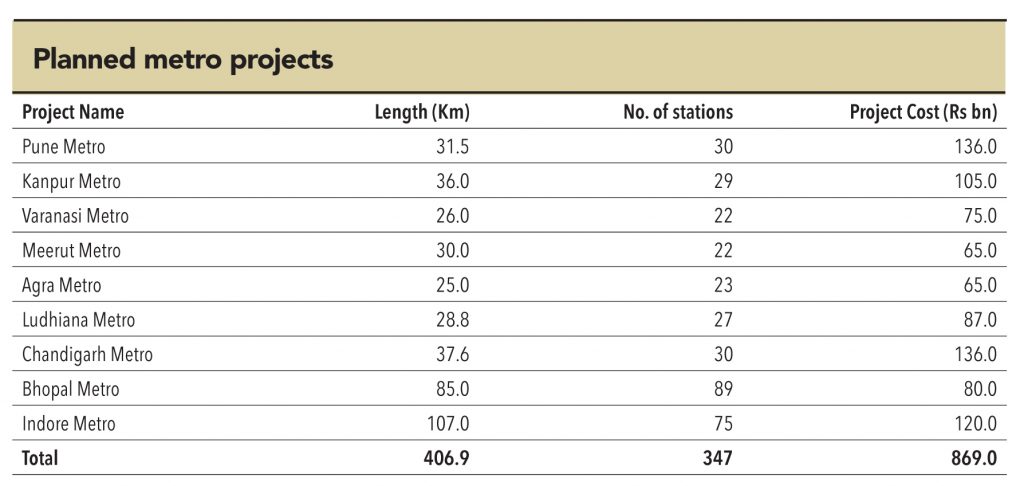

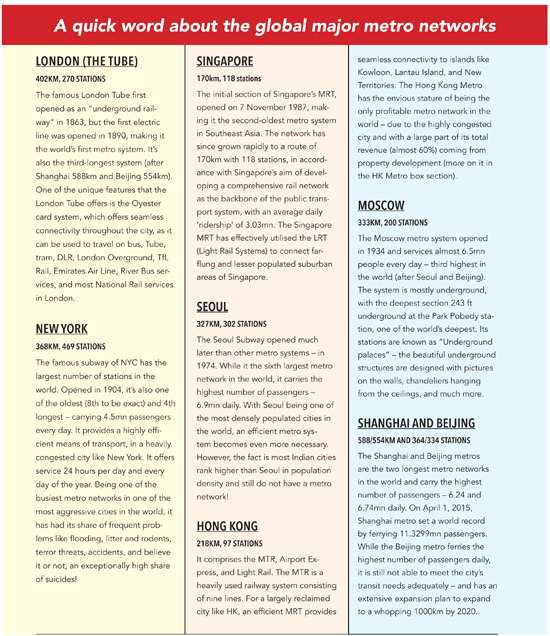
Subscribe to enjoy uninterrupted access